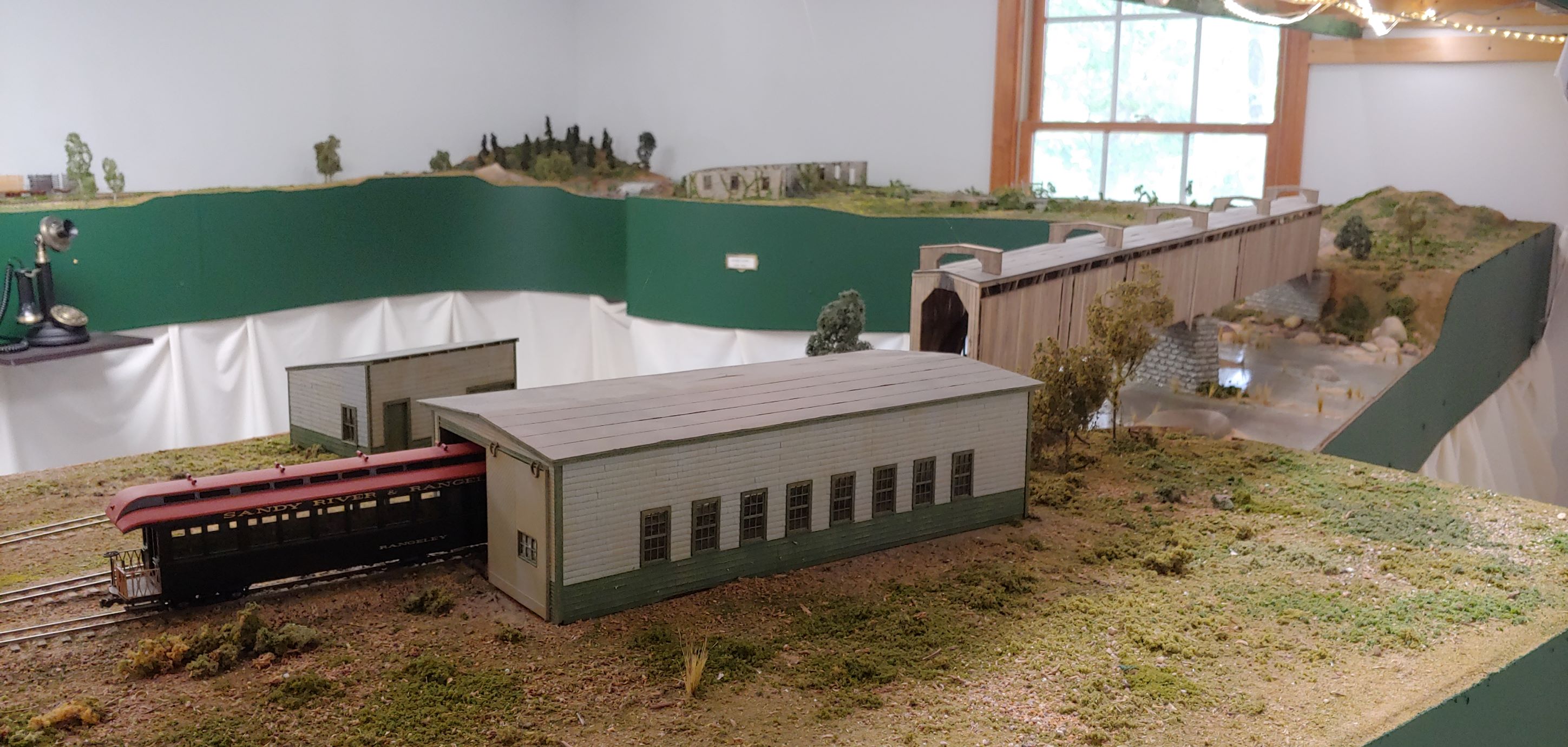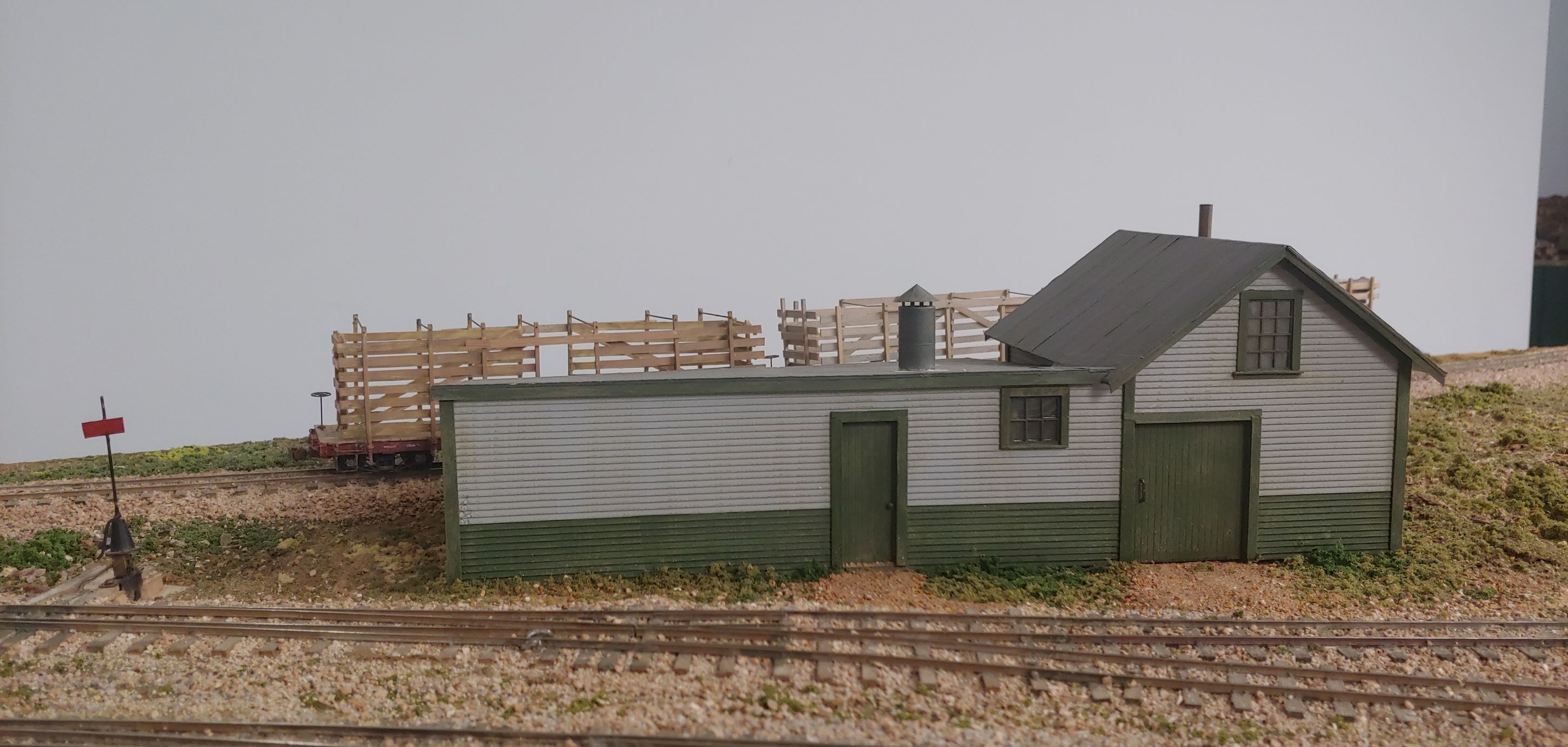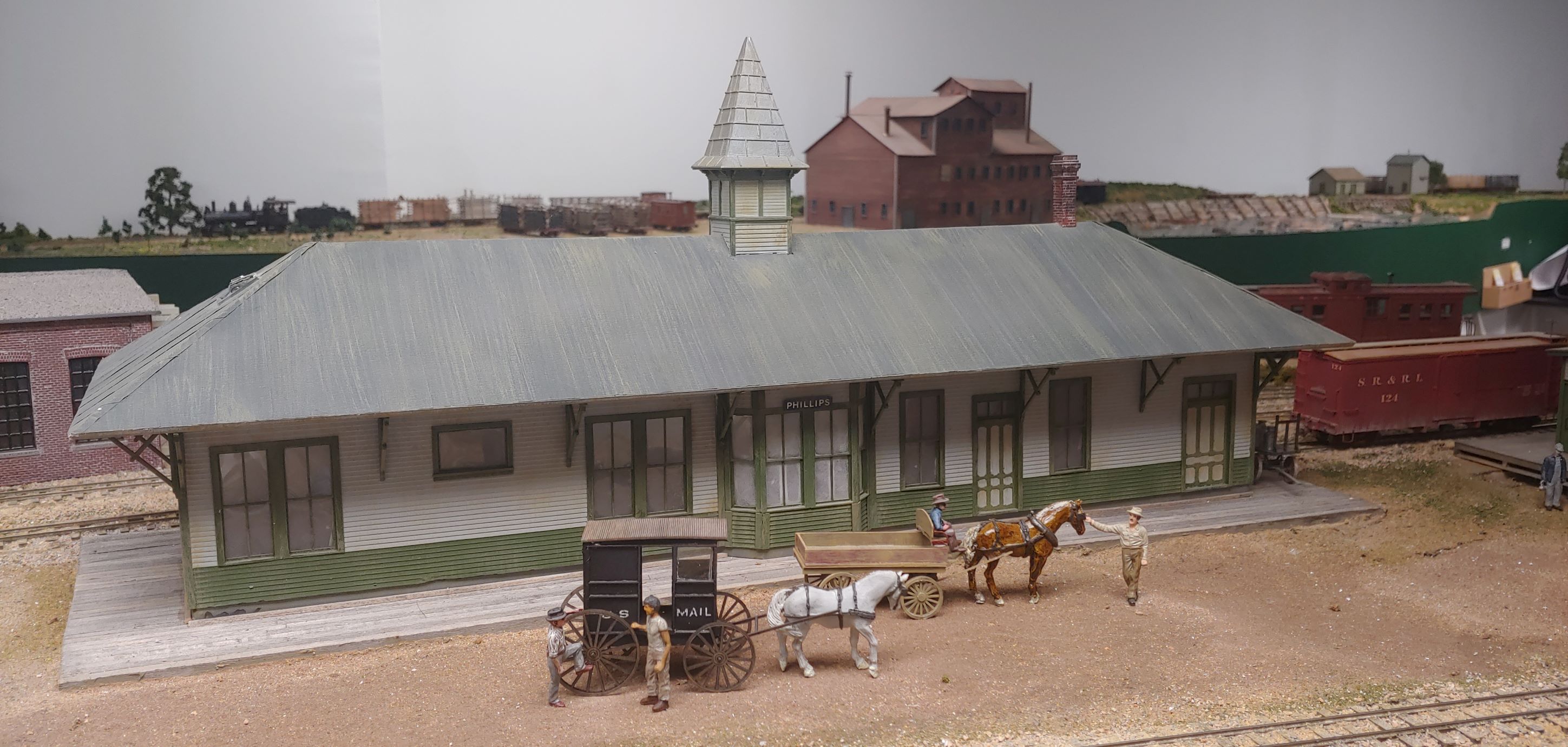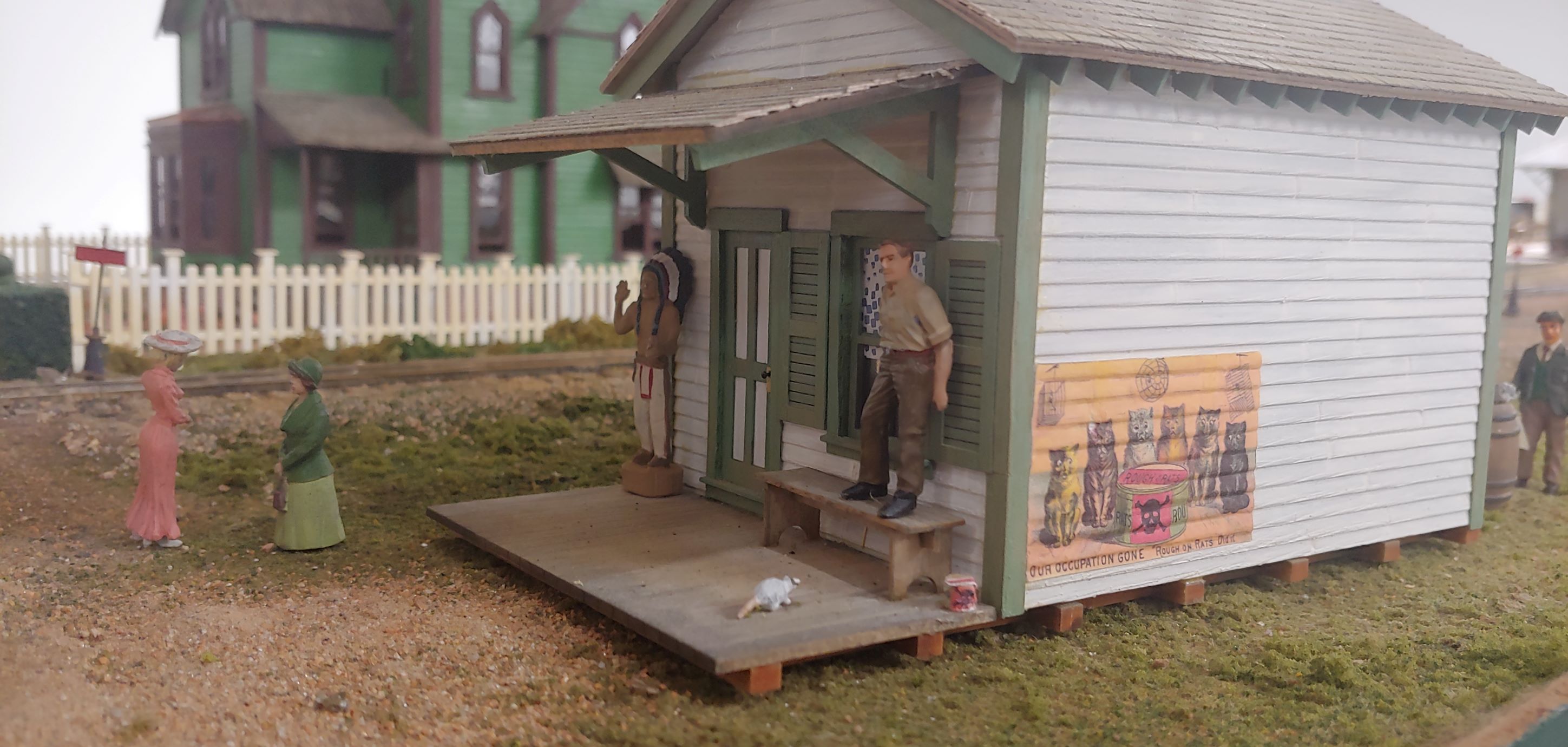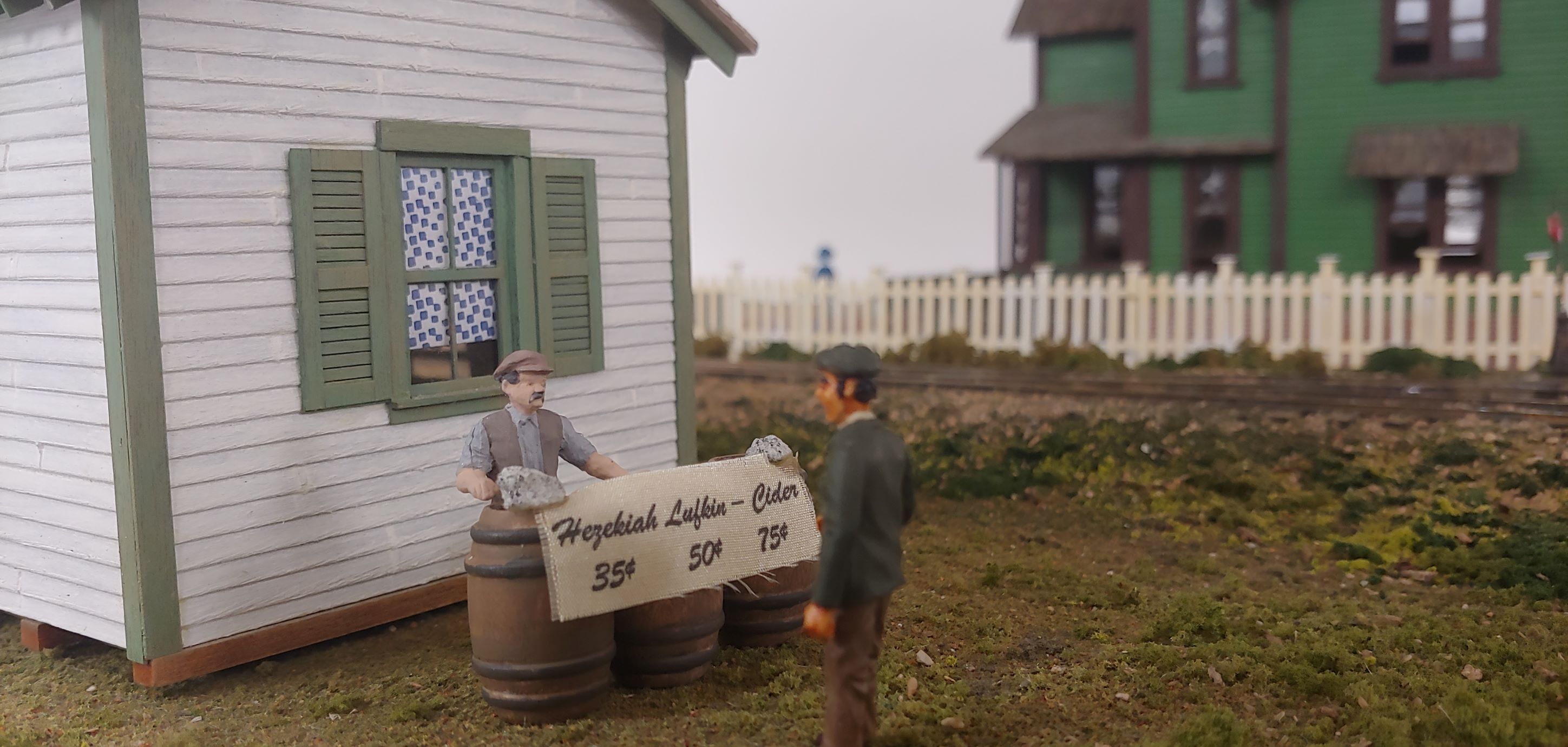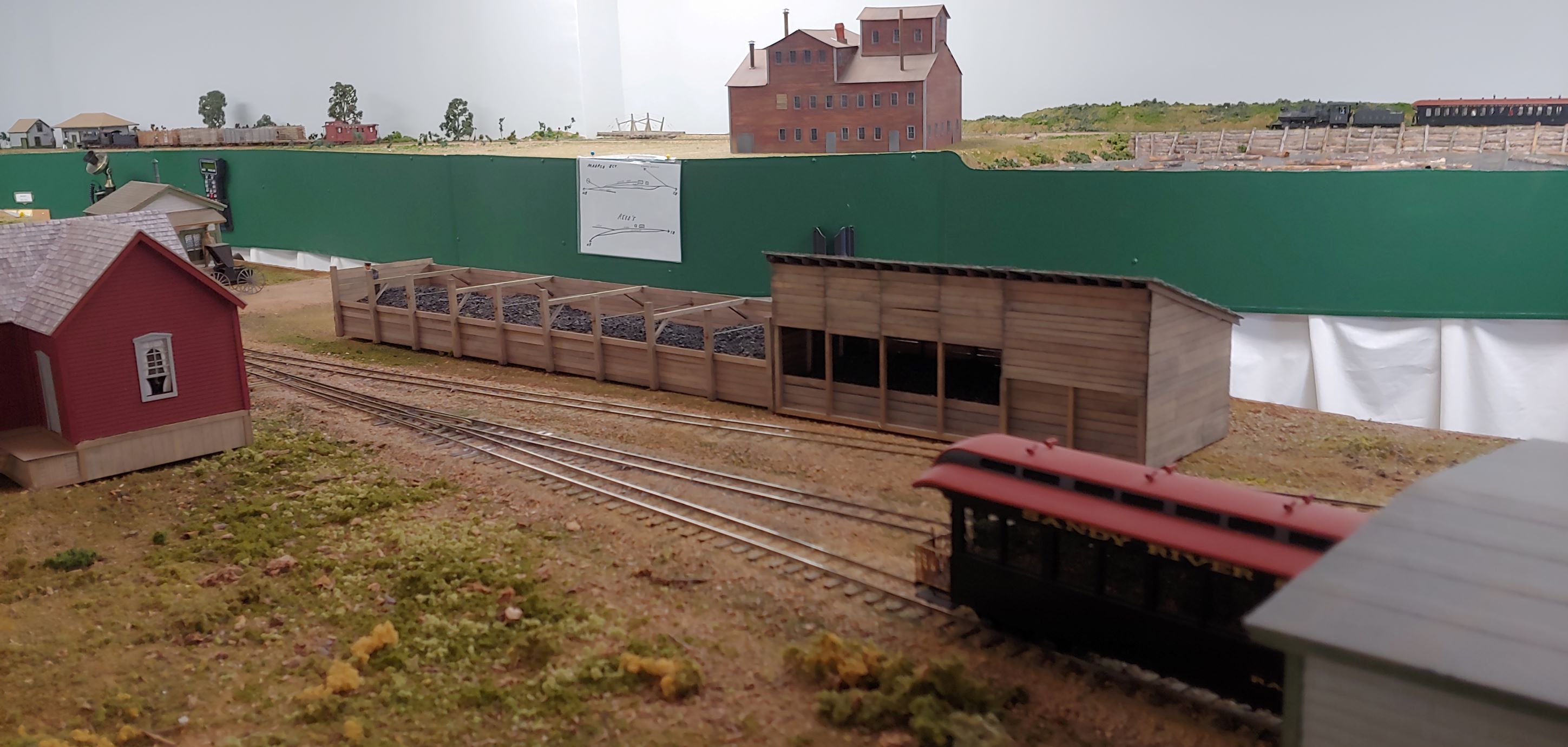Phillips
Milepost 18.1
Approaching Phillips yard from the south, the tracks pass the section house / sand house, with the Brayman Track behind it -- the mill burned years ago, soon after it opened, by the spur is handy for storing cars.
The turntable, water crane, ball signal, and hose house (in the foreground):
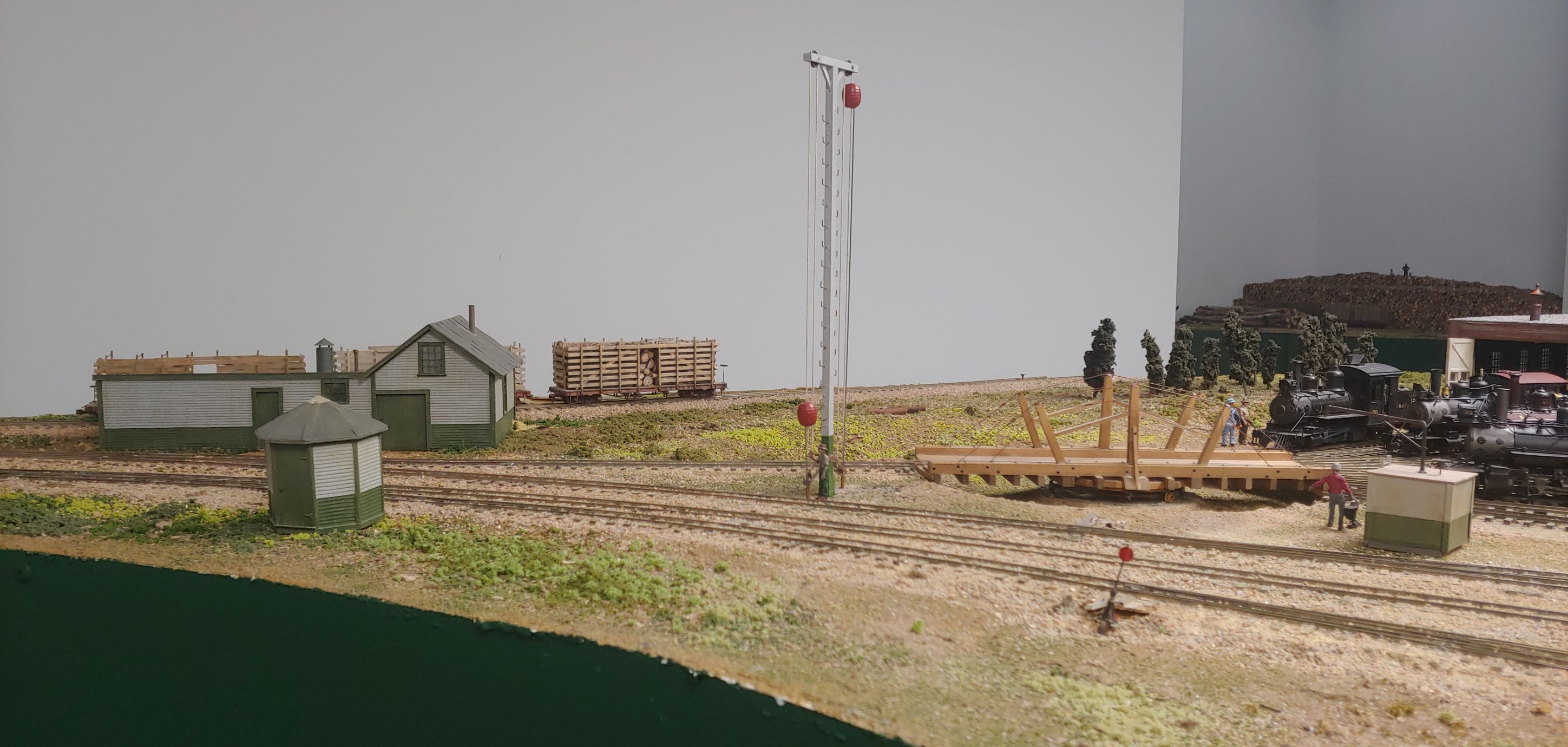
The images below are of the massive Phillips enginehouse, machine shop, and car shop, scratchbuilt using modified Design Preservation Models® wall castings with Grandt Line windows. Because many of the wall sections are identical, it was possible to make RTV rubber molds from these masters, and then cast parts in resin. Note that in several of the photos you can see Reed's depot in the background, as well as the log pile at Reed's Spur, on the other side of the aisle:
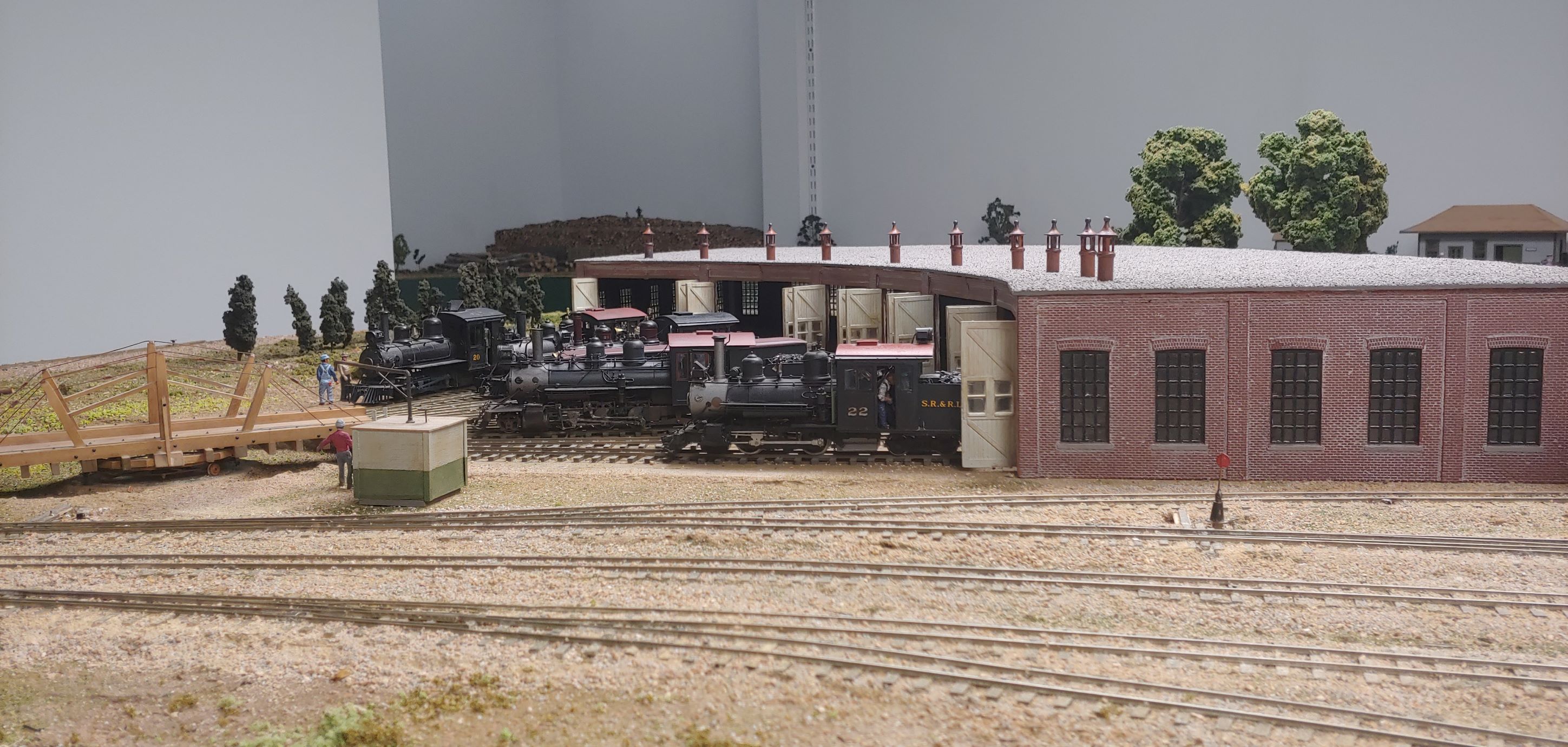
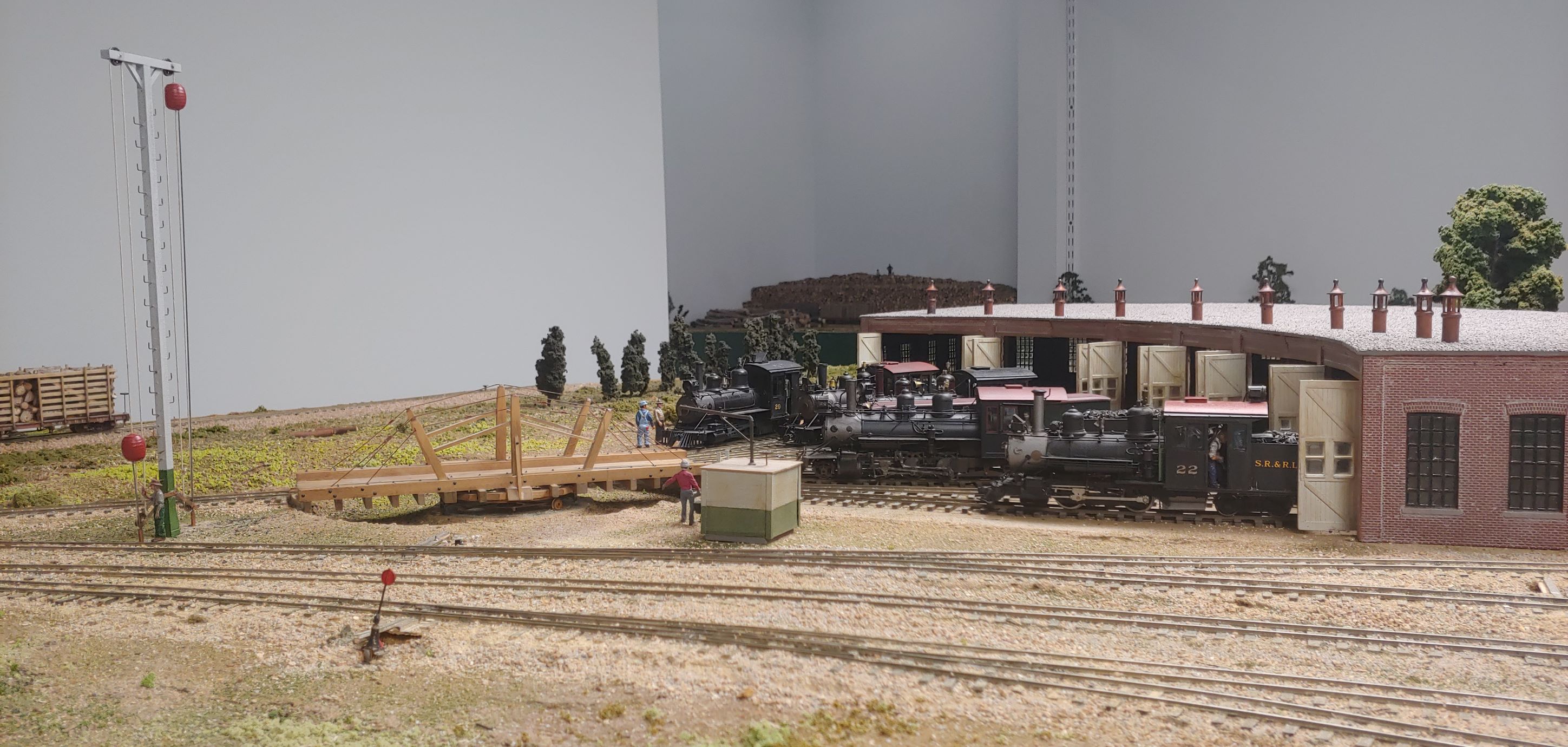

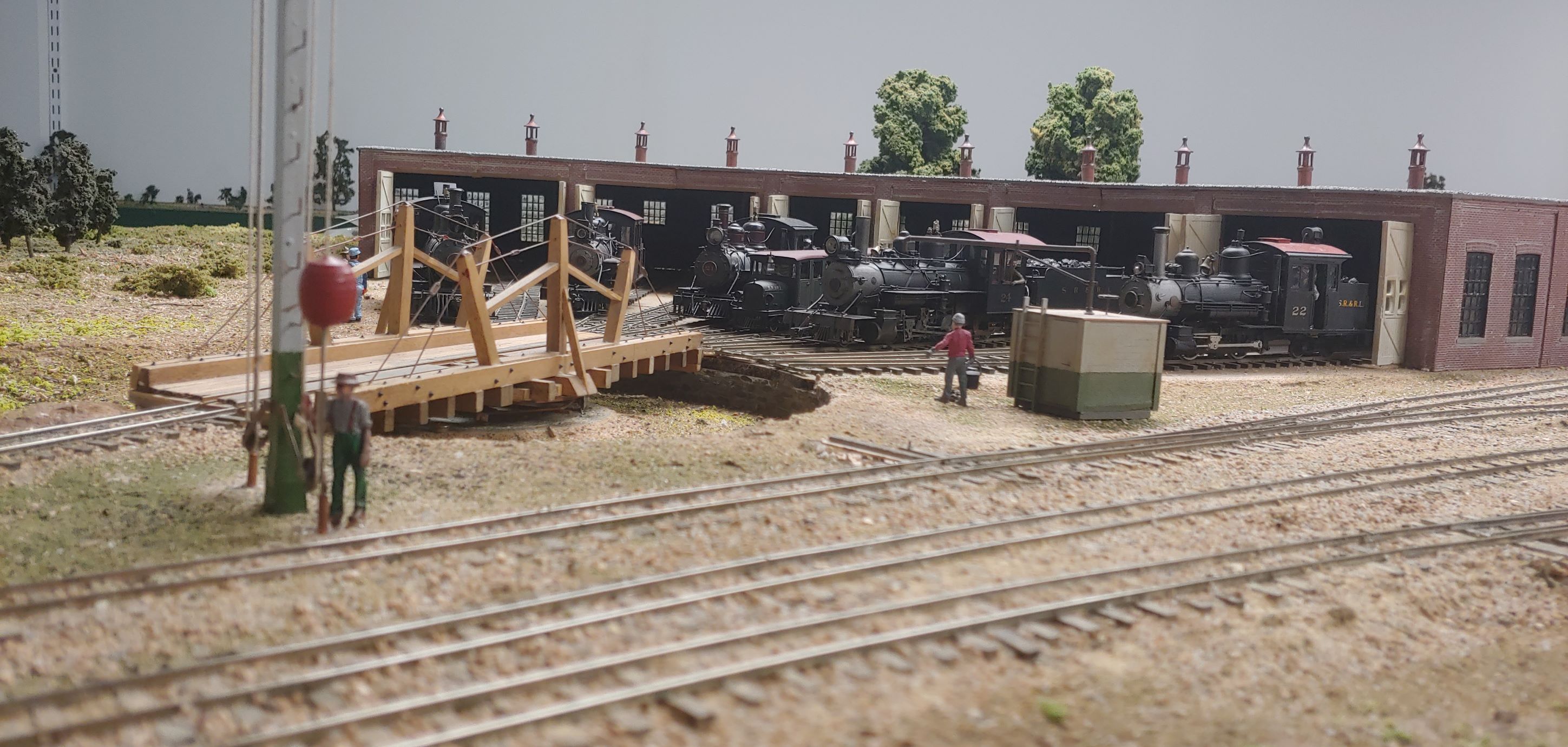
Here is some more "model-vs.-prototype" comparisons:
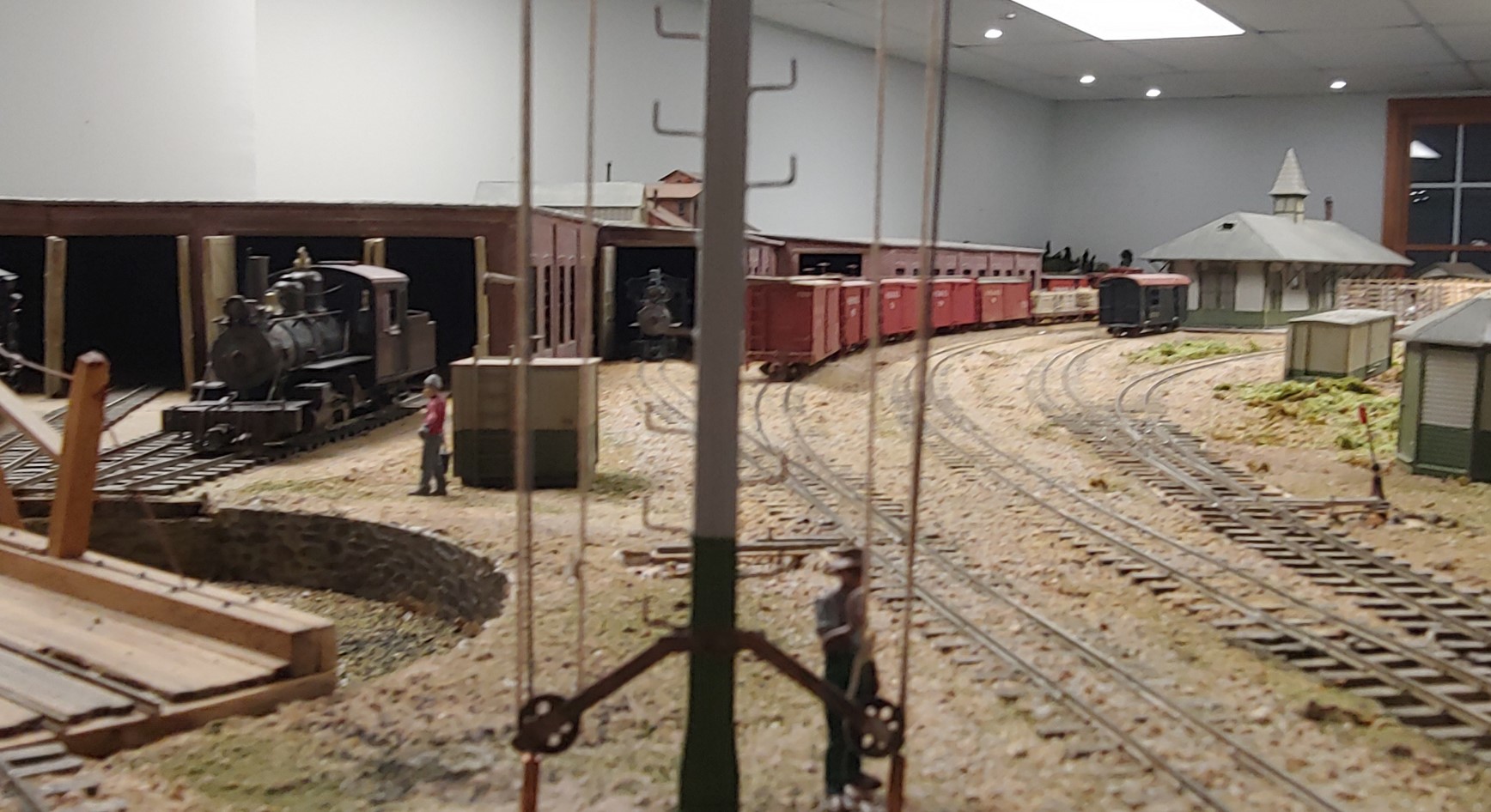
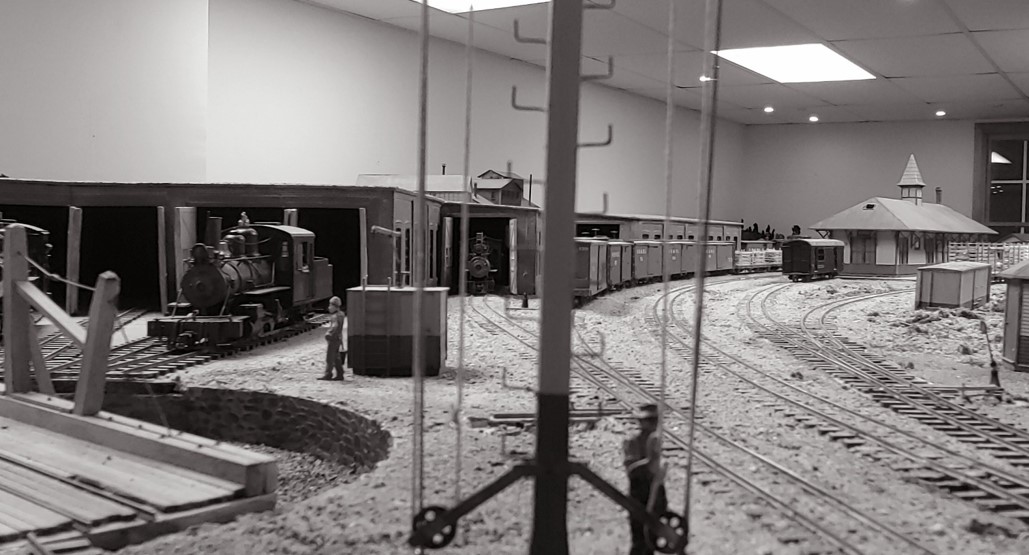
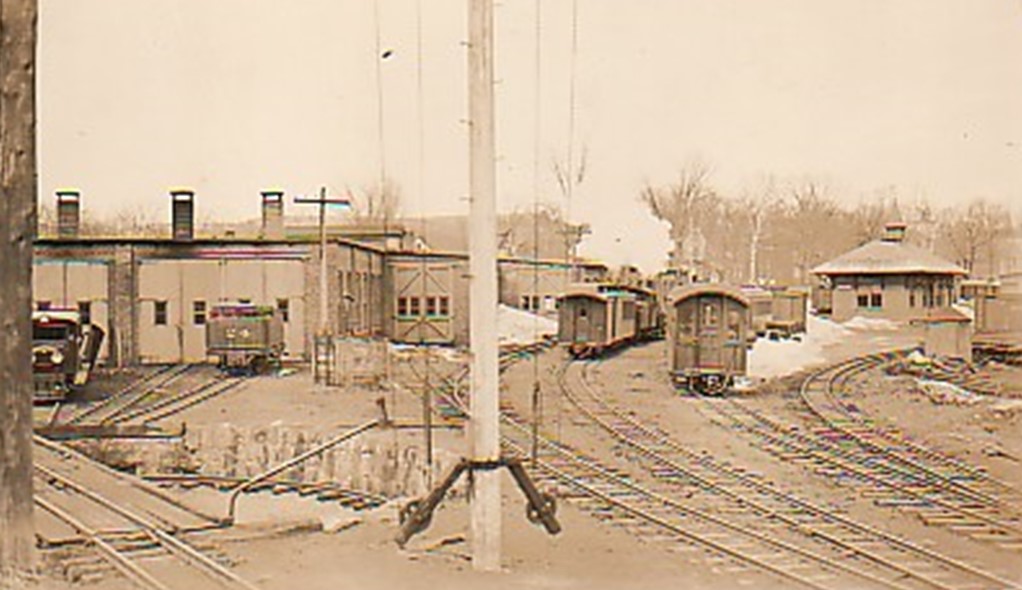
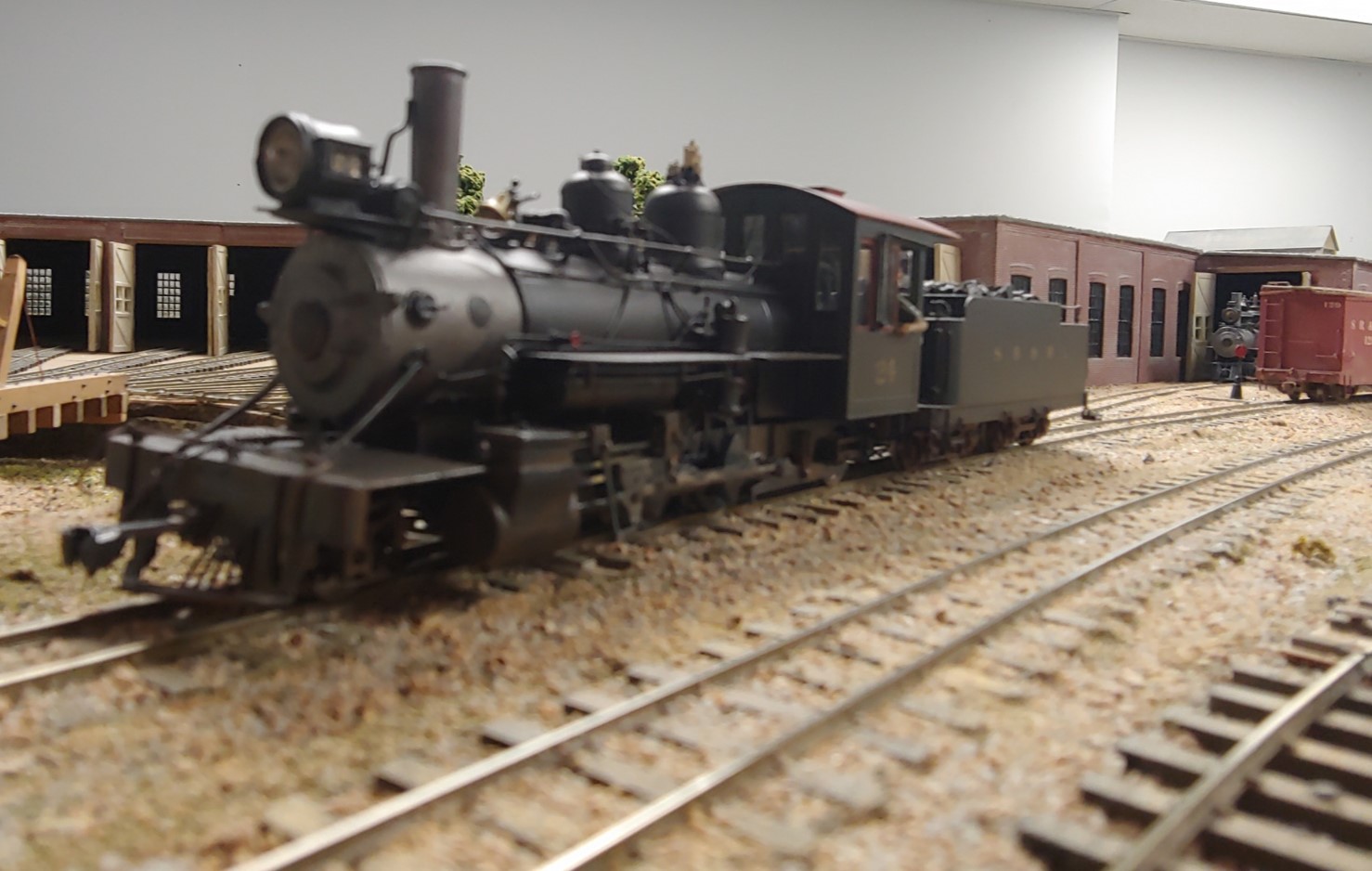
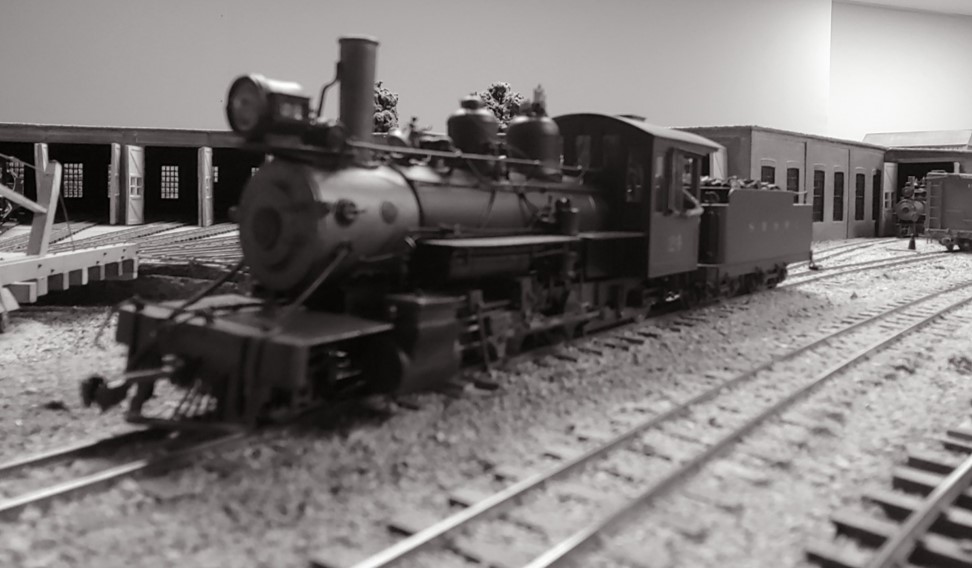
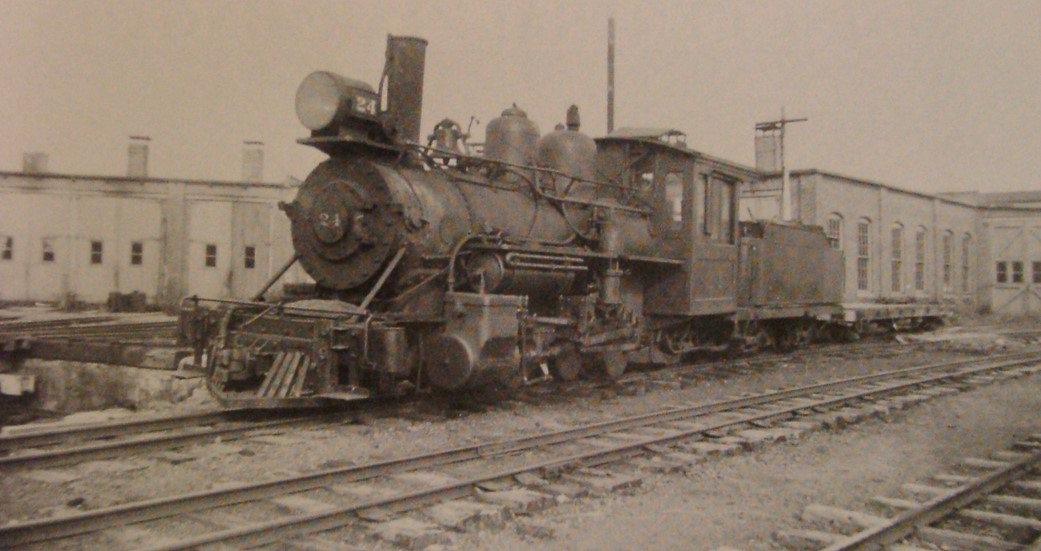
Below, left, the cemetery on the hill overlooking the west side of the complex (with the car shop the farthest away from the camera, the machine shop closest, and the enginehouse out of sight to the right. Famous SR&RL engineer Dana Aldrich will be buried in this cemetery one day, but not just yet -- it is only 1919, after all. Note the window in the left-center background, with a SR&RL boxcar barely visible through it. That is the window above the dispatcher's desk, as described in greater detail on the homepage.
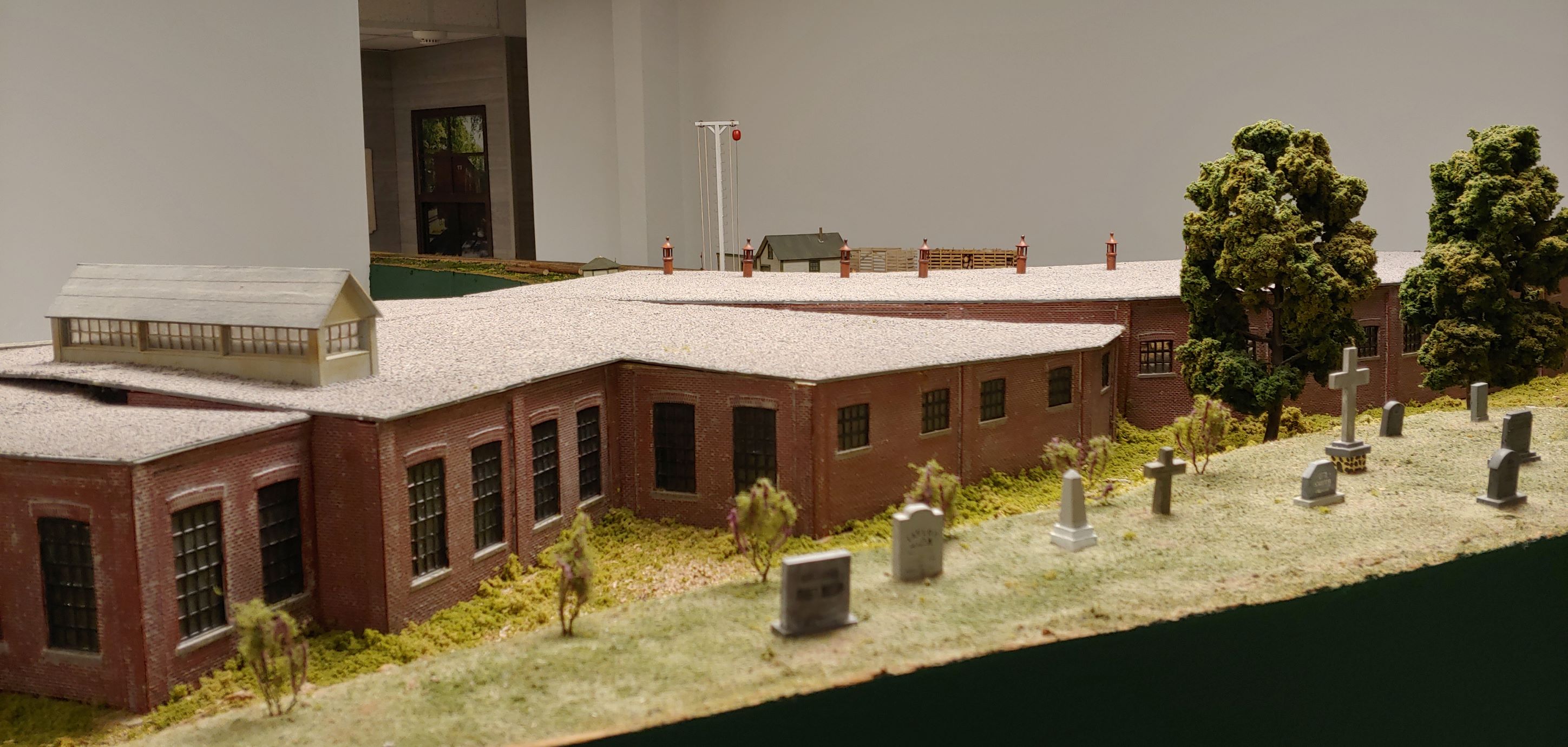
The track side of the Phillips depot:
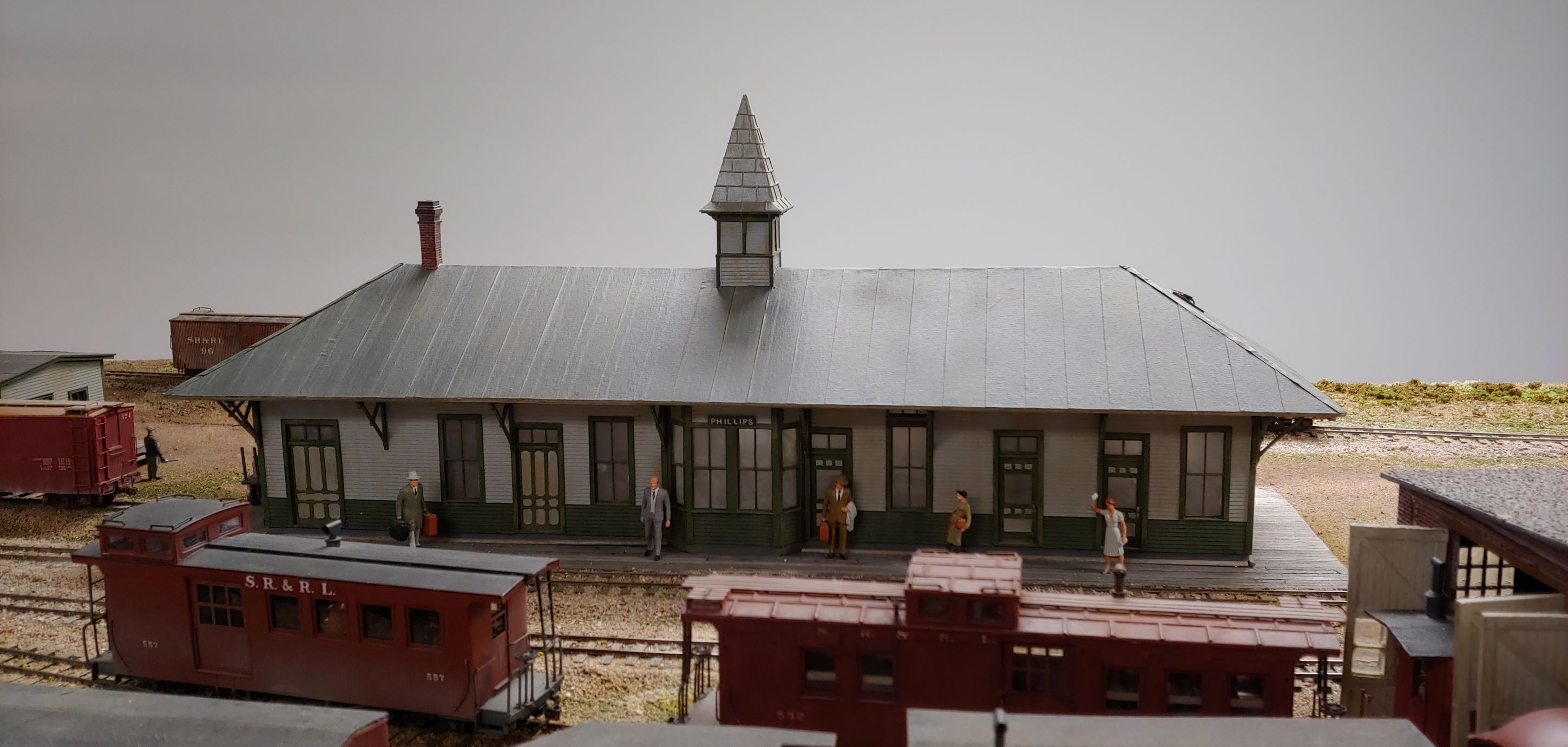
Two views of the Phillips depot and freight house. The two boxcars in the left background are in the Wilbur track.

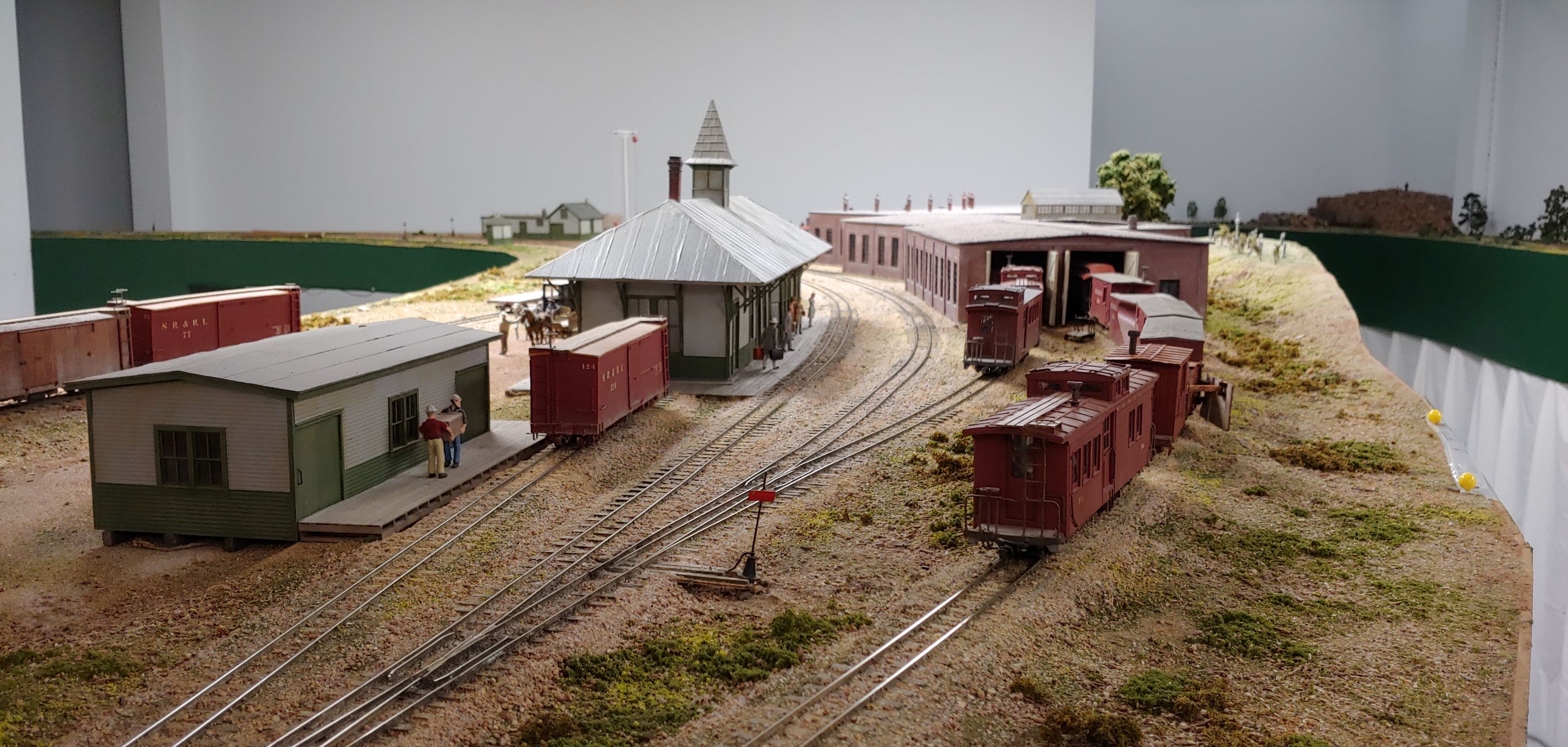
Some images of the back side of the depot, still in horse-and-buggy days, In the upper photo, note the looming presence of the mill adjacent to Toothaker Pond at Madrid Junction, to the north (also known as across the aisle):
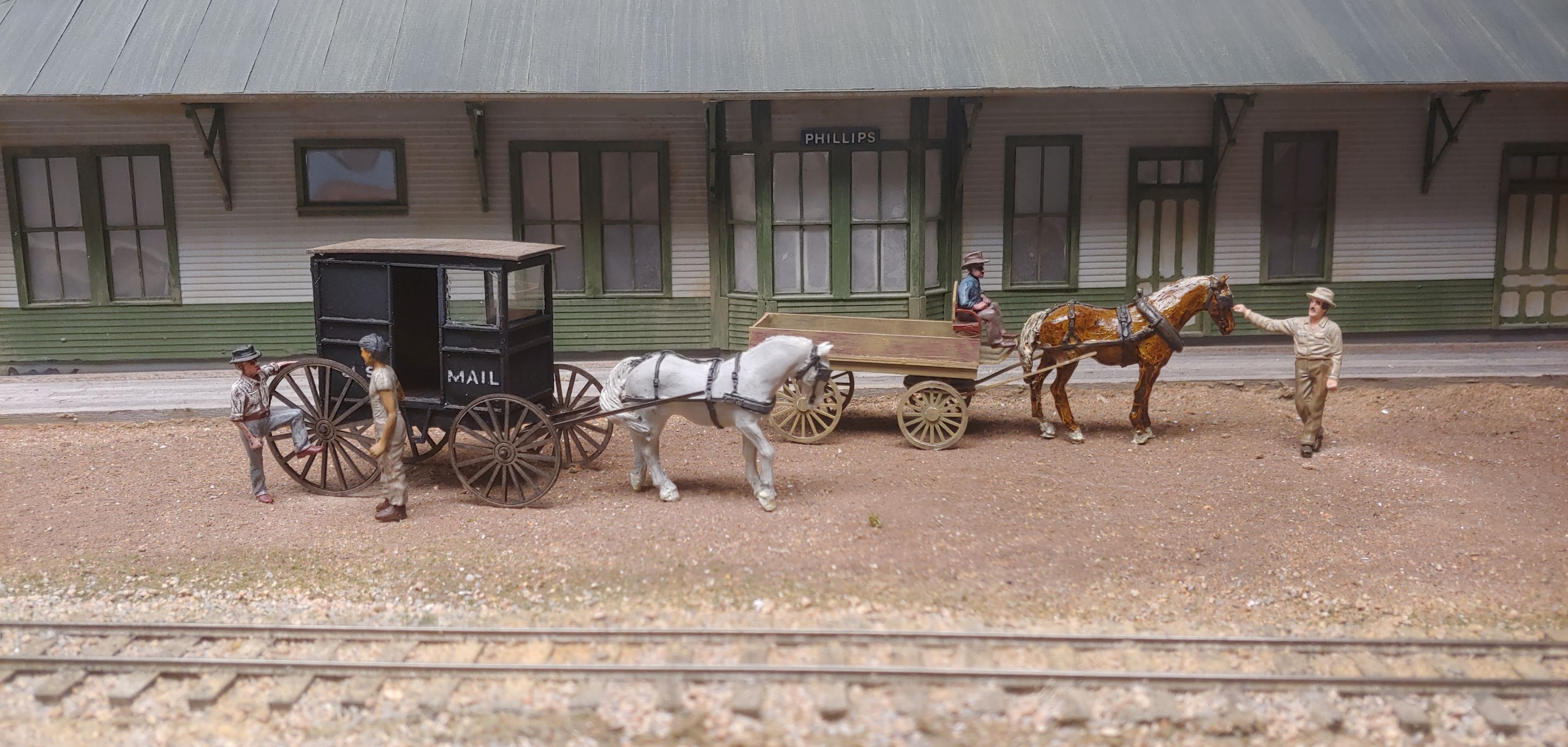
The commercial section of town is located along Main Street. I made no attempt to build prototypical models of the non-railroad structures in the area, but instead attempted to capture the flavor of a small New England town.
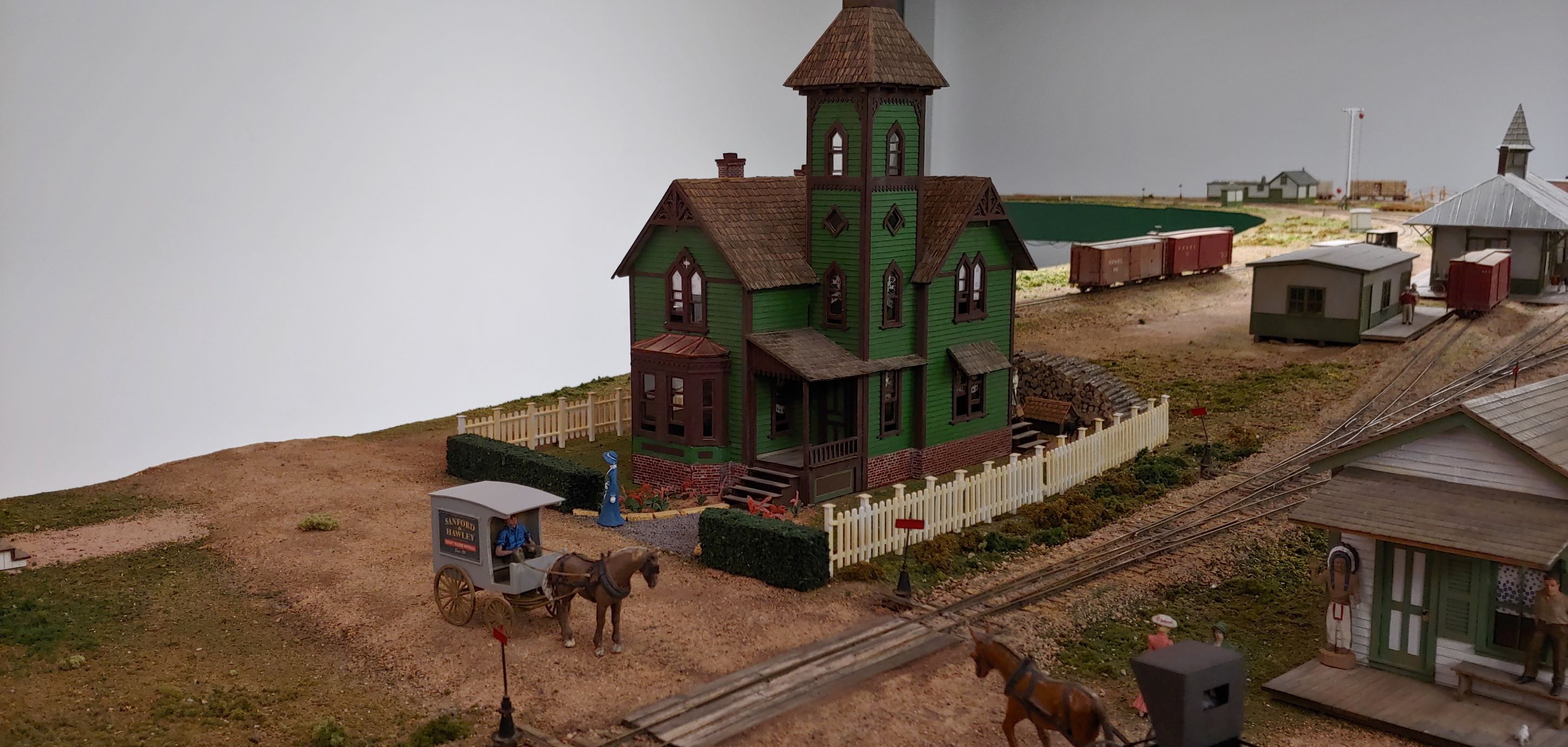
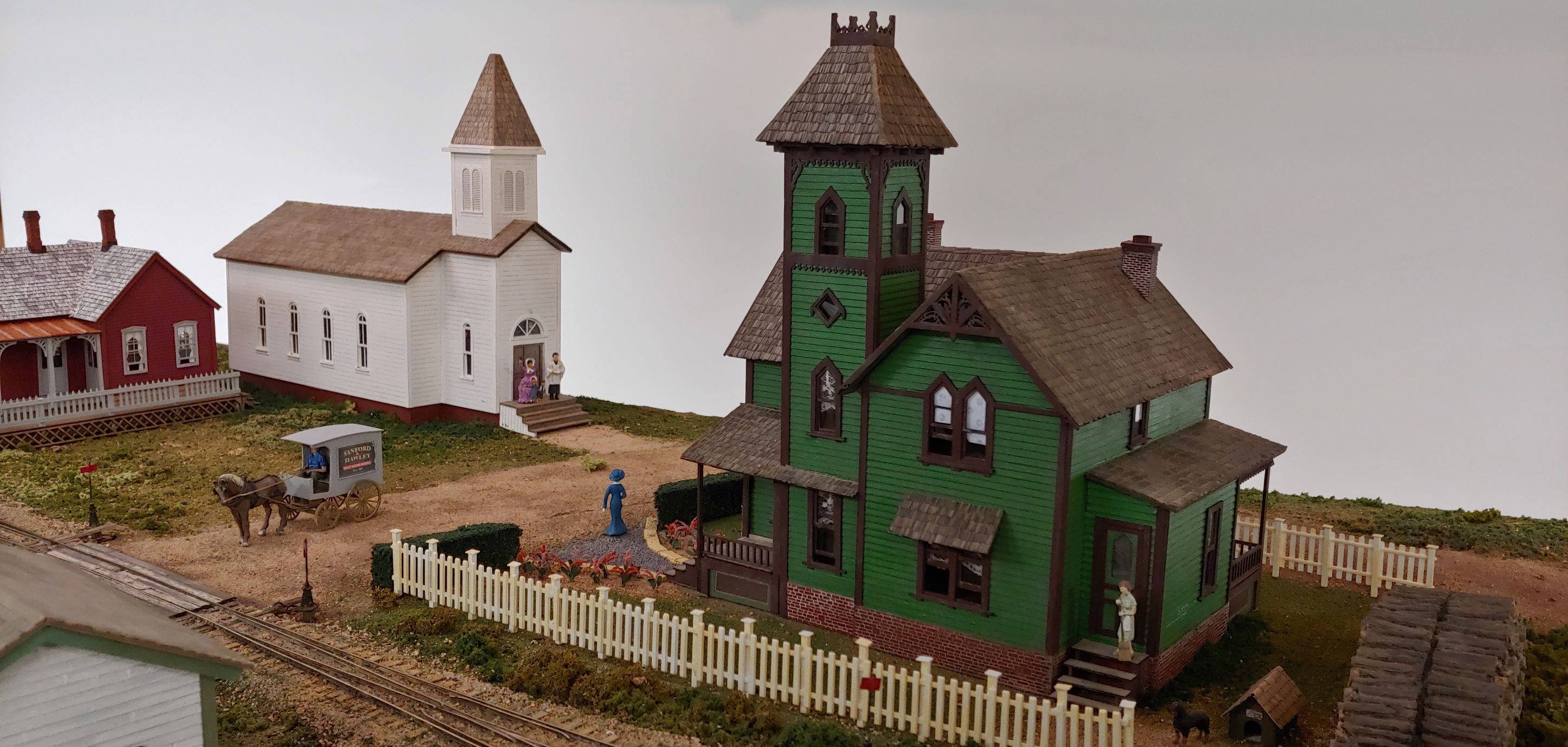
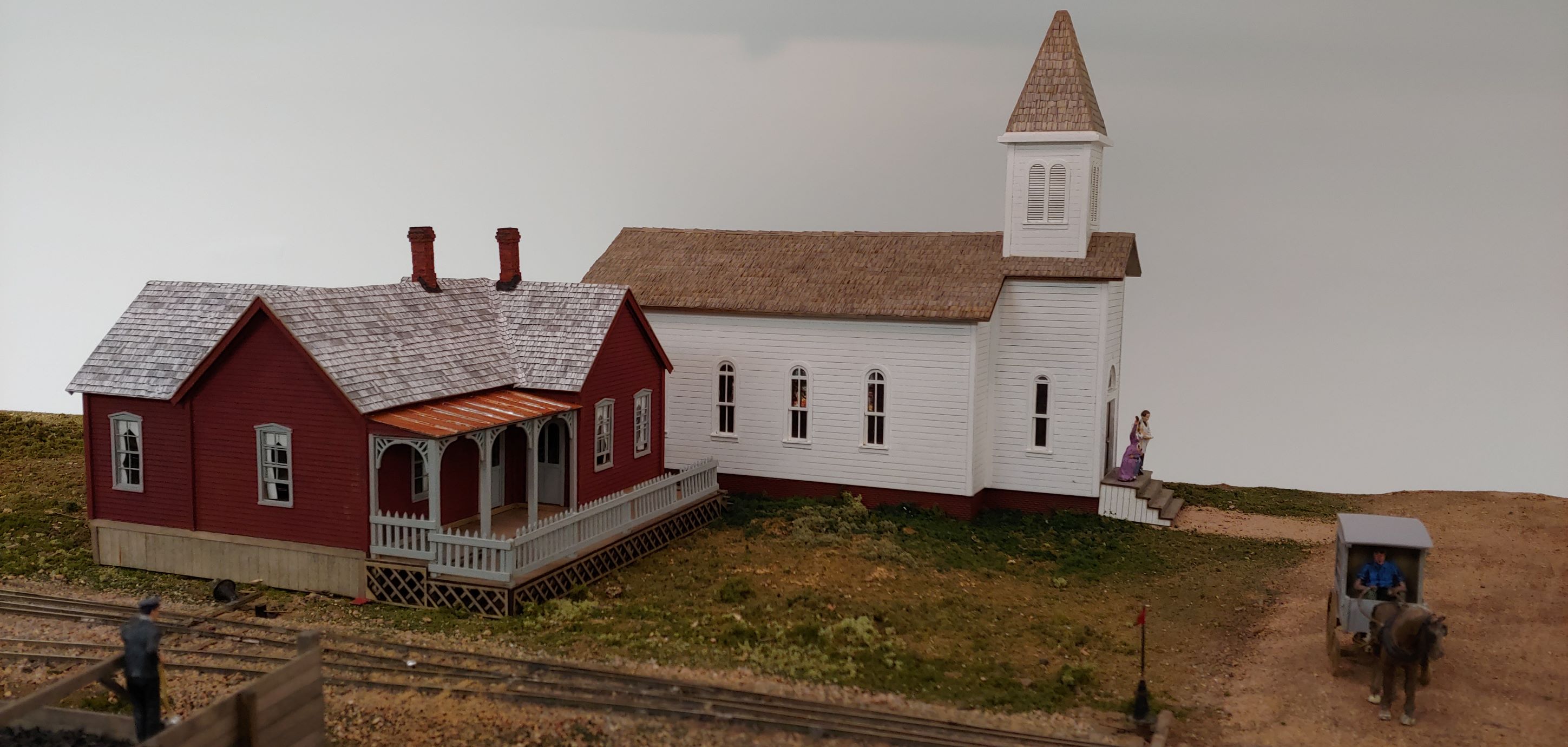
This small store contains a humorous scene that is much too subtle for anyone to spot, without it being pointed out to them. Note the poster for "Rough on Rats," a popular rat poison during the late 19th and early 20th centuries. There is a small can of "Rough on Rats" (note the label) at the edge of the porch. It clearly is not very effective, hence the rat that is also on the porch, terrifying the man into standing on the bench.
On the back side of the store is a scene that should appeal to anyone familiar with the Andy Aldrich stories in Two Feet Between the Rails, Volume 1 (page 366 to be precise). "The boys" had an opportunity to buy some fermented cider, for consumption after they tied up their trains for the night -- no Rule G violations. Hezekiah Lufkin offered three different types of cider -- weak, strong, and "he-man," all of them priced accordingly. Of course, everyone bought the most expensive "he-man" cider. And, of course, all three types of cider were exactly the same. Today, you can be sure, Hezekiah would have a Harvard M.B.A. and be the vice president of marketing for a major corporation. Here, one of "the boys" is deciding which cider to purchase.
A friend and fellow model railroad generously gave me an old Western Scale Models Blacksmith Shop kit, complete with interior, that he acquired along with a batch of HO-scale material. The structure is named for him and his son -- also a great model railroader. It is a great kit, but this one was lacking instructions, as well as plans. Based on three photos available online, plus one on the kit box, I was able to draw plans that were a pretty fair representation of what must have been in the kit originally. Still, it ended up being more or less a board-by-board scratchbuilding project. The foundation is made from small pieces of decomposed granite (bags are available in every garden center and DYI store), glued to the bottom of the walls, when the building was upside down. Then, the structure was turned upright and bedded into a mixture of ground goop (water, glue, brown paint, celluclay, and vermiculite) slathered on a piece of masonite. The interior details were pressed in before the mixture set. Then the roof went on, with individual trusses, furring strips, shingles, etc. The horse and farrier are from the Aspen Modelling Company.
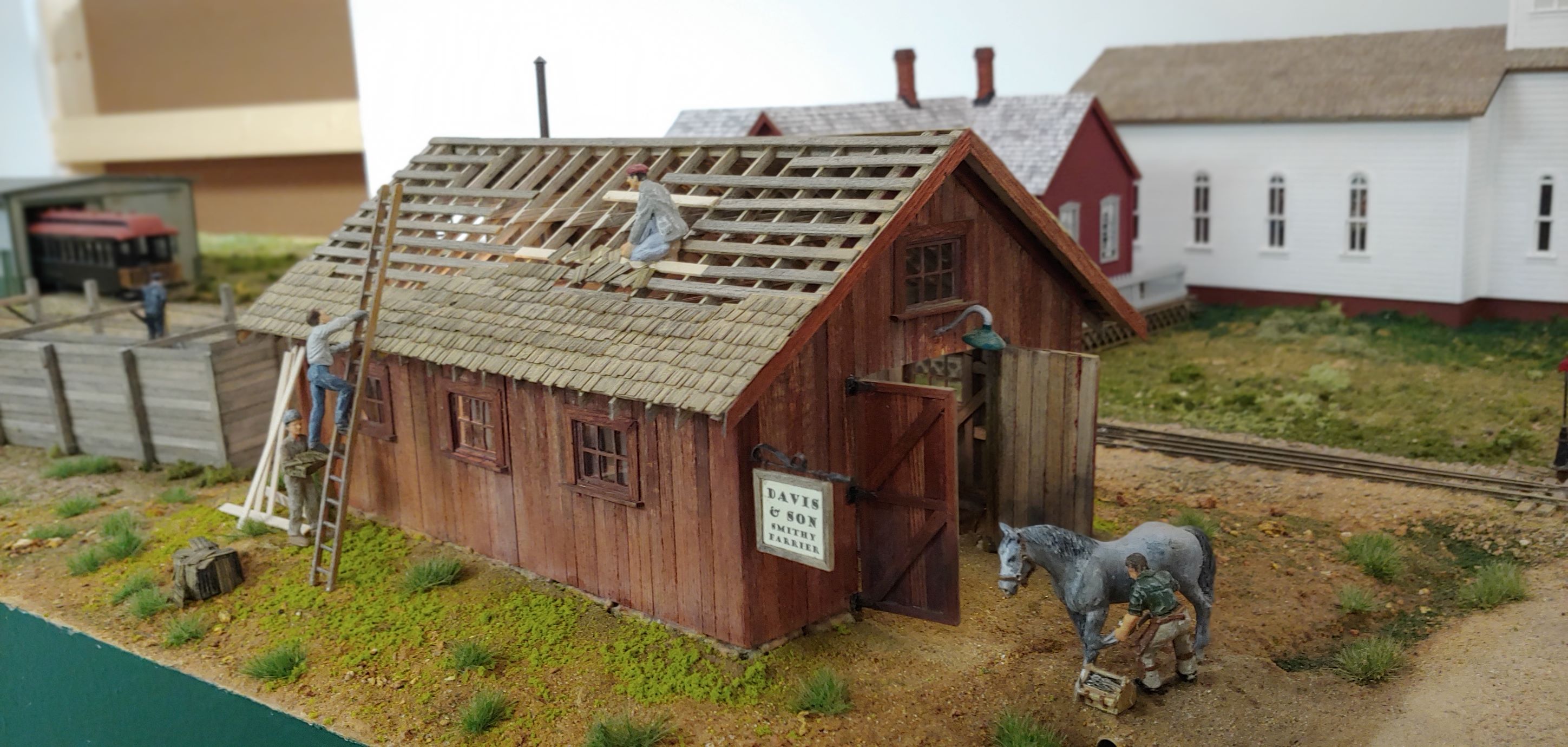
Click HERE for more photos of the Blacksmith Shop
Crossing Main Street we transition from the old Sandy River Railroad to the Phillips & Rangeley Railroad. In the Upper Yard, to the north of Main Street, is a large coal shed, on the west side of the tracks. Wood shingles rather than clapboards predominate on the buildings constructed for the P&R. Here are the section house and the paint shop.

The roof of the paint shop on the far right edge of the photo, and the coal dock in the center (with Main Street on the far left). The covered bridge is off of the right edge of the photo. Notice, across the aisle, there is a northbound freight train stopped at Madrid Junction (the depot is out of sight, but you can clearly see Toothaker Pond and the mill), while at the back left there is a freight train, also northbound, stopped in the siding at Reed's, with the depot and the section house visible at the far left. In the center rear, above the track diagram, is the Madrid Junction turntable. I was not happy about placing Madrid Junction so close to Reed's but those are the compromises that are necessary in O scale!
One more view of the P&R buildings in Phillips, located just to the south of the Covered Bridge. Beyond, on the other side of the window, is the Old Stone Fort and, just behind it, Davenport Flat. Continuing north, just above the candlestick phone at the extreme left edge of the photo, the pulp racks barely visible are at Madrid Junction, parked on the branch leading to Madrid Village and No. 6.
